ORIF
1. Principles
General considerations
These are unstable injuries and the integrity of the syndesmosis must be restored.
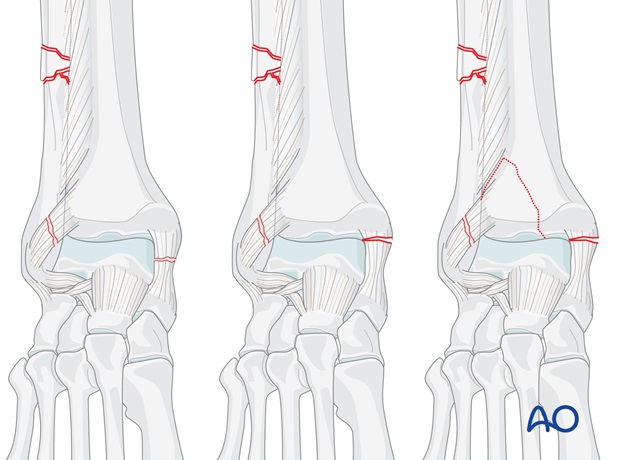
2. Order of fixation
The crux of treatment is the correct reduction of the lateral malleolus and fibula. Length alignment and rotation must be restored otherwise it will not be possible to reduce the talus, the syndesmosis or the Volkmann’s triangle (if present).
Multifragmentary diaphyseal fibular fracture with rupture of the deltoid ligament
- The fibular shaft is brought out to length and fixed
- The integrity of the syndesmosis is restored
The deltoid ligament is not normally fixed as it heals well spontaneously. Occasionally, the ligament is interposed between the talus and medial malleolus, blocking reduction. In these cases, the medial side must be opened to reposition the ligament and it may then be surgically reattached.
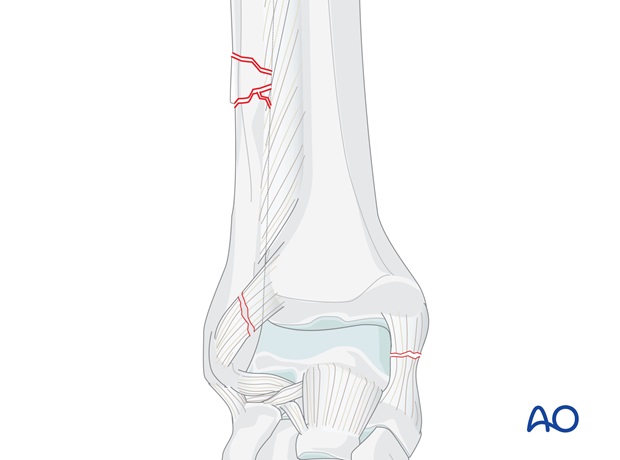
Multifragmentary diaphyseal fibular fracture with fracture of the medial malleolus
The choice of fixing the medial or lateral side first may be guided by the surgeon's preference, but the ankle joint in these fractures is often very unstable. The stability is dramatically improved once the medial fracture is fixed (if present), so we would suggest the following sequence:
- The medial fracture is fixed
- The fibular shaft is brought out to length and fixed
- The integrity of the syndesmosis is restored
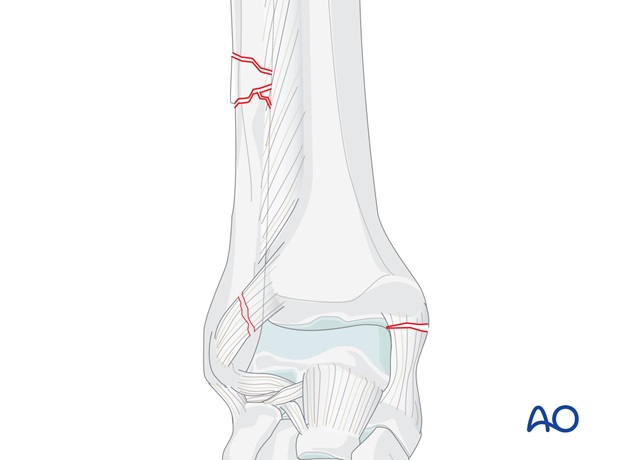
Multifragmentary diaphyseal fibular fracture with fracture of the medial and posterior malleolus
The choice of fixing the medial or lateral side first may be guided by the surgeon's preference, but the ankle joint in these fractures is often very unstable. The stability is dramatically improved once the medial fracture is fixed (if present), so we would suggest the following sequence:
- The medial fracture is fixed
- The fibular shaft is brought out to length and fixed
- The integrity of the syndesmosis is restored
- The Volkmann's fragment is reduced and fixed
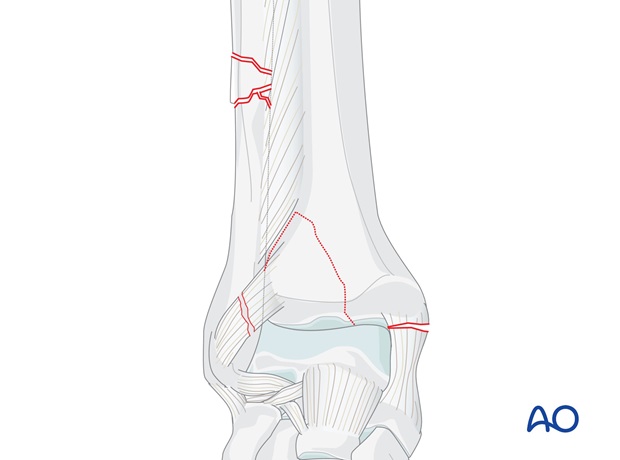
3. Patient preparation
Depending on the approach, the patient may be placed in the following positions:
- Supine position
- Lateral position
- Supine position, figure-of-four
- Prone position (preferred for posterior fractures)
4. Approaches
Approach to the medial fracture
A medial fracture is addressed through the medial approach.
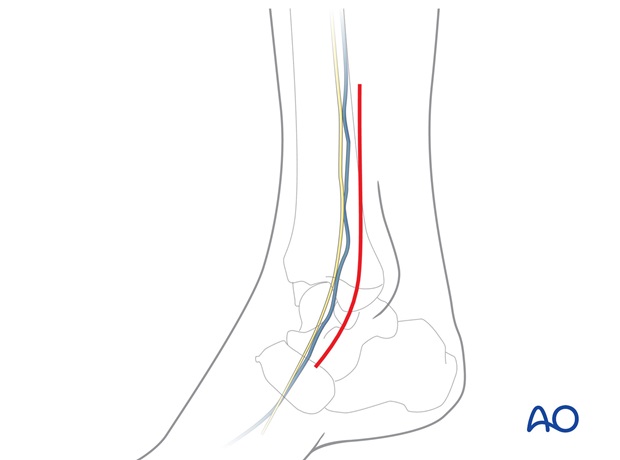
Approach to the fibular shaft fracture and syndesmosis
A direct lateral approach is used for the fibular shaft fracture. The level of the fracture dictates the level of the incision required. The distal end of the incision may need to be extended for insertion of positioning screws, or a small separate incision may be used.
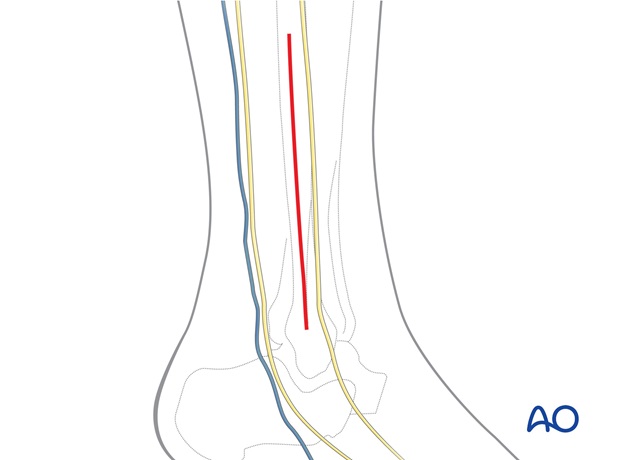
Approaches to the Volkmann's fragment
If direct reduction and fixation of the Volkmann's fragment is chosen, a posterior lateral approach is used.
This incision may be extended proximally to allow access and fixation of the fibular fracture if it is relatively low. Alternatively, and more commonly, the fibular fracture is relatively high, and is approached through a separate lateral incision placed more proximally.
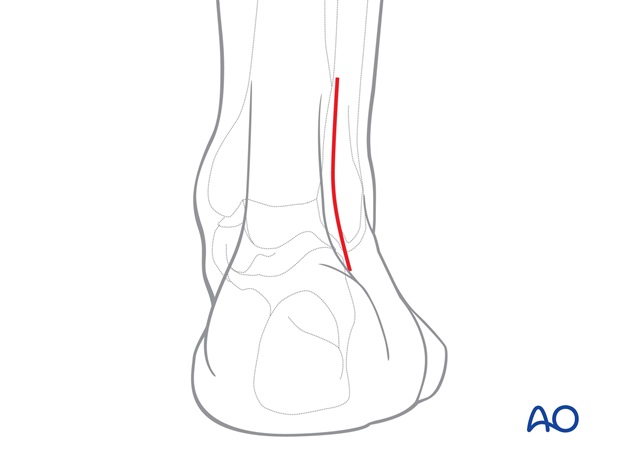
Alternatively, the Volkmann's fragment may be addressed with indirect reduction and anterior screw fixation through additional anterior stab incisions.
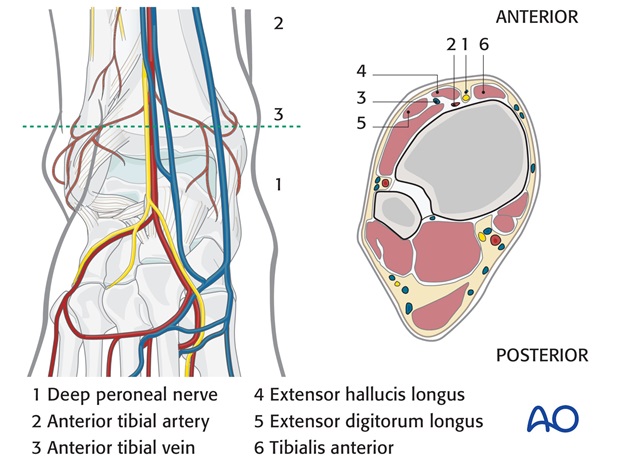
5. Fixation
Medial malleolar fracture (if present)
The ankle joint in these fractures is often very unstable. The stability is dramatically improved once the medial fracture is fixed (if present).
Most medial fractures are fixed with lag screws, which should be inserted perpendicular to the plane of the fracture.
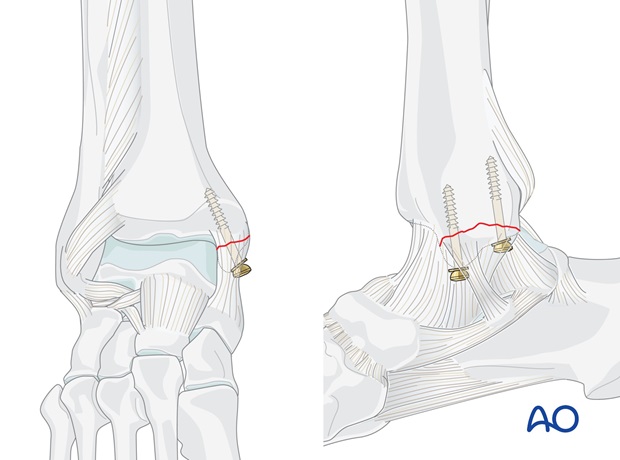
If the fragment is too small or in poor quality bone, K-wires and cerclage compression wiring may be better.
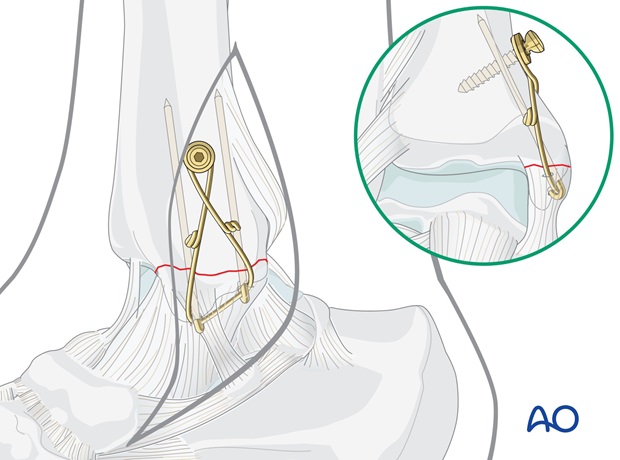
Fibula
The multifragmentary fibular fracture must be brought out to length and is then best fixed with a bridging plate.
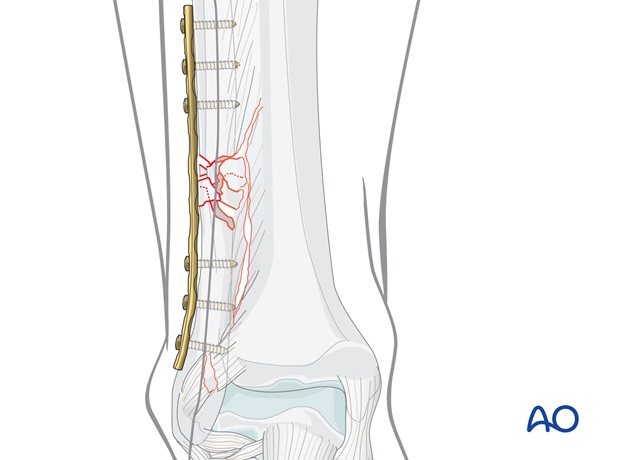
Syndesmosis
The integrity of the syndesmosis is restored and stabilized with one or two positioning screws. These may be inserted through the distal holes in the plate or separately from the plate.
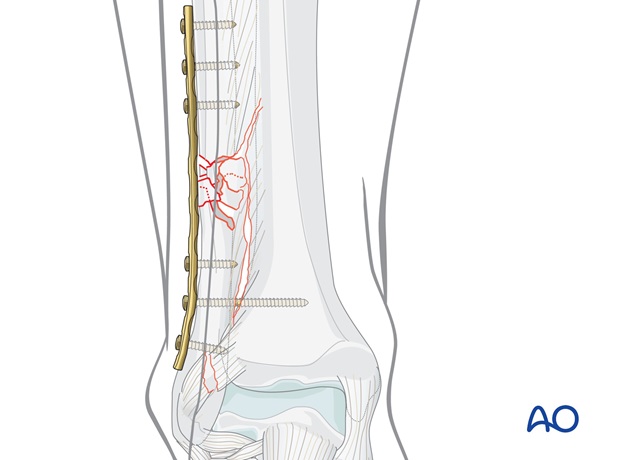
Volkmann's fragment (if fractured)
The Volkmann's fragment may be addressed under direct vision through a posterolateral approach.
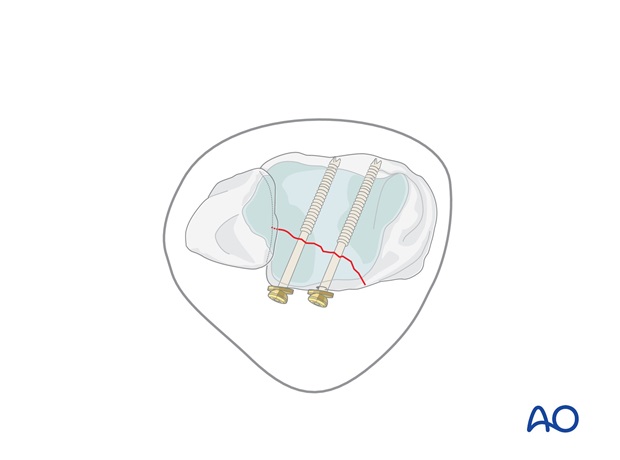
If indirect reduction of the Volkmann's fragment is chosen, sagittal lag screws are inserted through separate stab incisions.
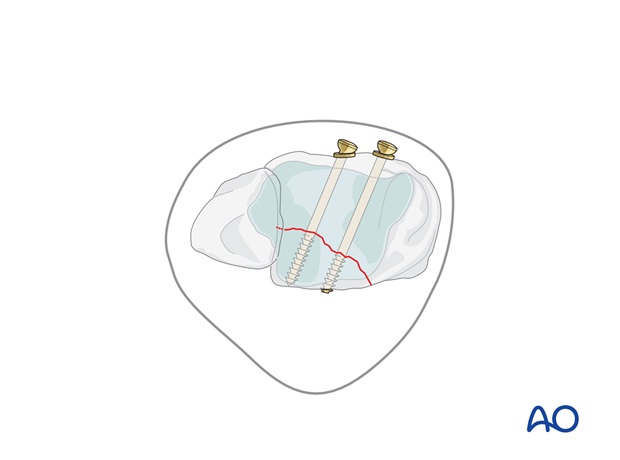
6. Check of osteosynthesis
Check the completed osteosynthesis by image intensification.
Make sure the intra articular components of the fracture have been anatomically reduced.
Make sure none of the screws are entering the joint. This needs to be confirmed in multiple planes.
7. Case
Preoperative AP and lateral images showing an isolated displaced suprasyndesmotic ankle fracture in a 70-year-old. This injury also demonstrates a deltoid ligament and intraosseous membrane rupture.
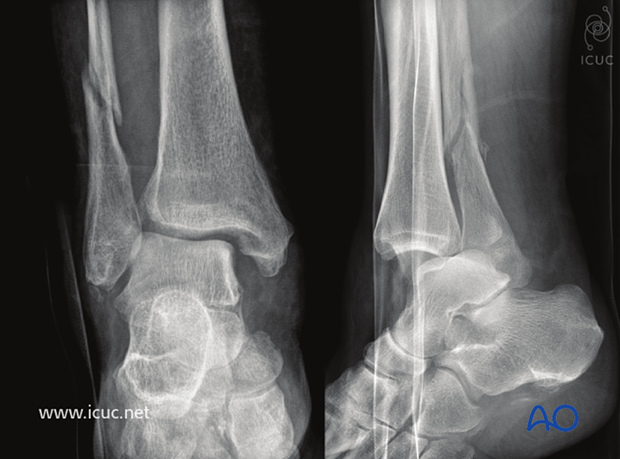
In this case, the first step was reduction of length, alignment and rotation of the fibula. As the fibula in this anatomic location is small, a 1/3 tubular plate was adequate.

Intraoperative image shows fracture reduction and appropriate plate placement

A clamp is used to both maintain reduction and hold the 1/3 tubular plate in place.
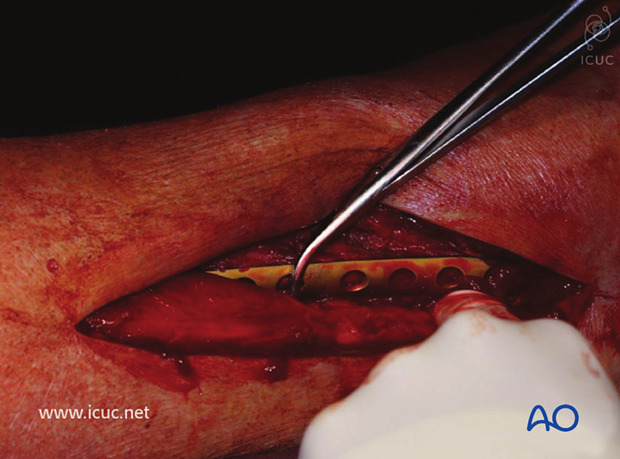
Intraoperative AP image showing that the fracture is out to length and the ankle joint reduced.
This fracture was compressed using the 1/3 tubular plate and the spring-loaded drill guide. The first screw placed was the most proximal screw which created an axilla. The second (distal) screw is the compression screw, which was inserted with the spring-loaded guide used for compression.

In this case a lag screw was then inserted after application of the compression plate providing additional compression.
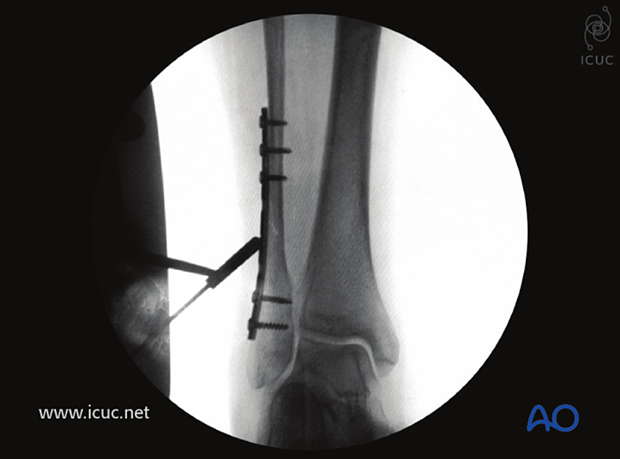
Usually the lag screw would be inserted first followed by application of the neutralization plate. The ankle joint is nicely reduced, but the syndesmosis is torn by definition.
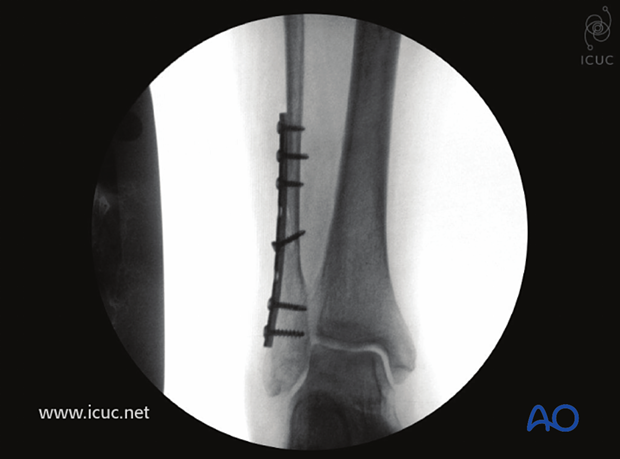
A bone hook is applied to the fibula to confirm the instability of the syndesmosis.
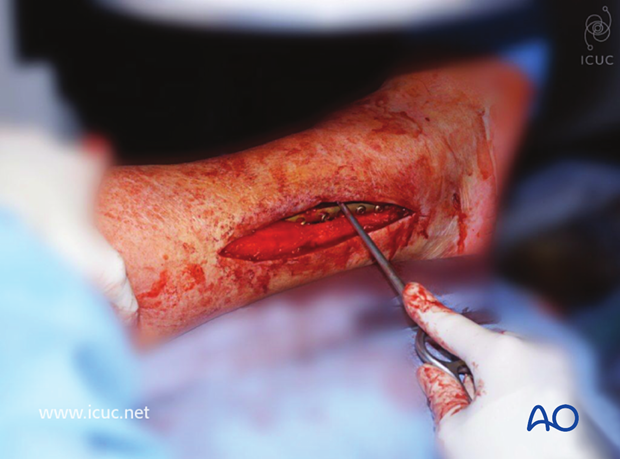
Preparation of the syndesmotic screw hole.
Note: the fibula lies on the posterolateral side of the tibia, so the drill bit is aimed anteromedially.
This screw is applied without compression.

Intraoperative AP view of final construct.

Intraoperative lateral view of final construct.
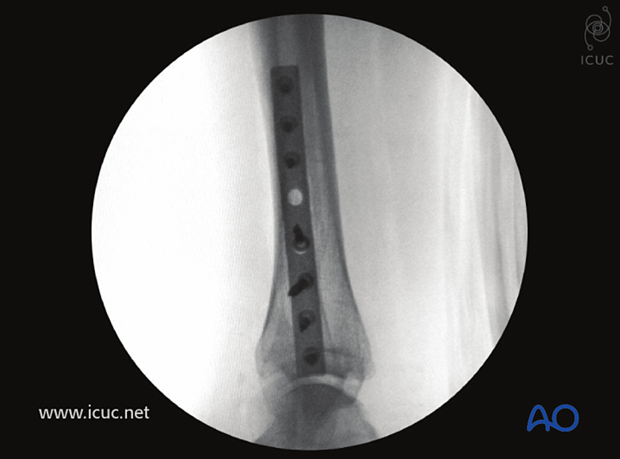
Clinical image of final plate construct.
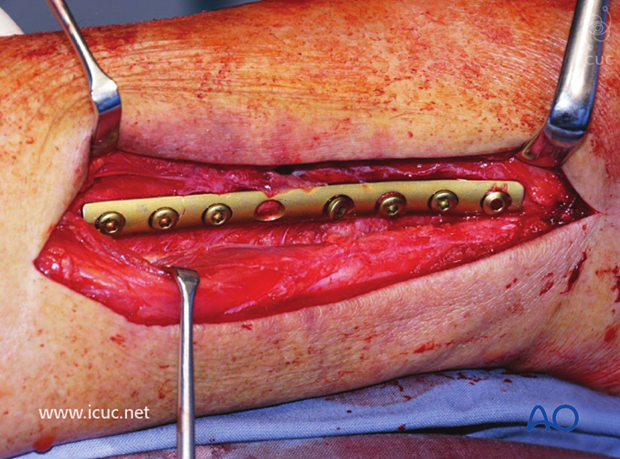
Postoperative X-rays in AP and lateral view showing reduced fracture.

6 weeks postoperative AP and lateral images before weight bearing is initiated.
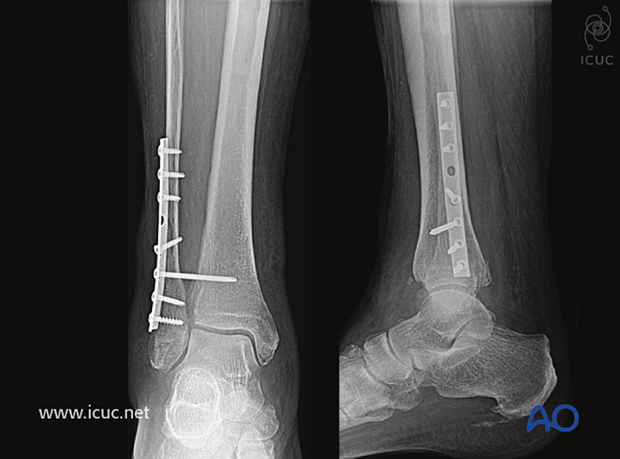
8. Postoperative treatment of suprasyndesmotic malleolar fractures
Postoperatively, the joint is held in neutral position by a splint.
If drains are used, they are removed after 24-48 hours. The patient is mobilized with crutches depending on the swelling of the soft tissues.
Postoperative CT control of both ankles is recommended if any syndesmotic incongruence is suspected or if a positioning screw was inserted; special notice is taken of the rotation of the fibula in the syndesmosis, compared with the uninjured side.
Joint motion is allowed and encouraged during physiotherapy. Weight bearing of 20-30 kg when the foot is unsupported. Full weight bearing may be possible using a cast, or an ankle brace, but should not be allowed when a positioning screw is used because of the risk of implant failure.
The positioning screw may be removed after 8-10 weeks.













